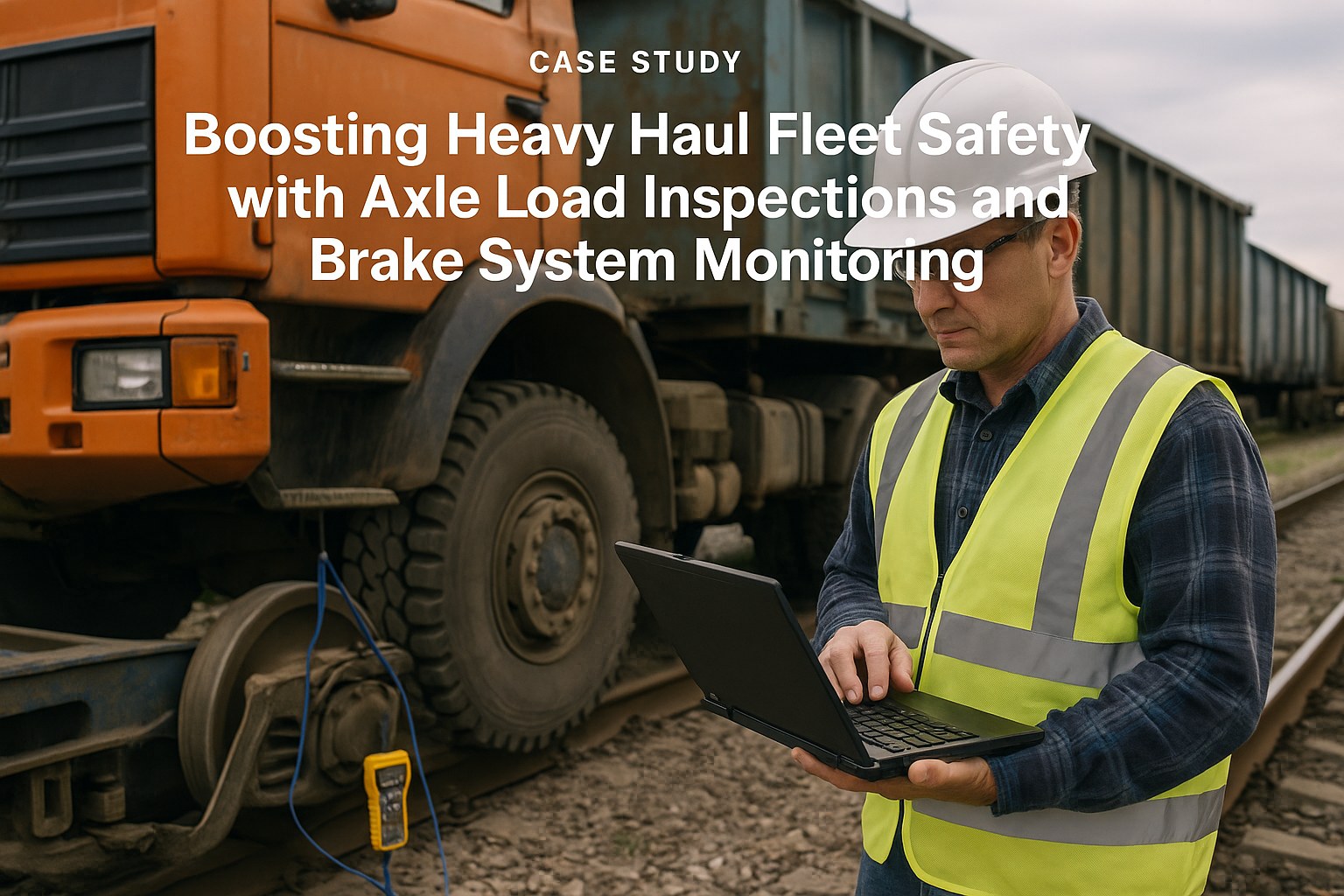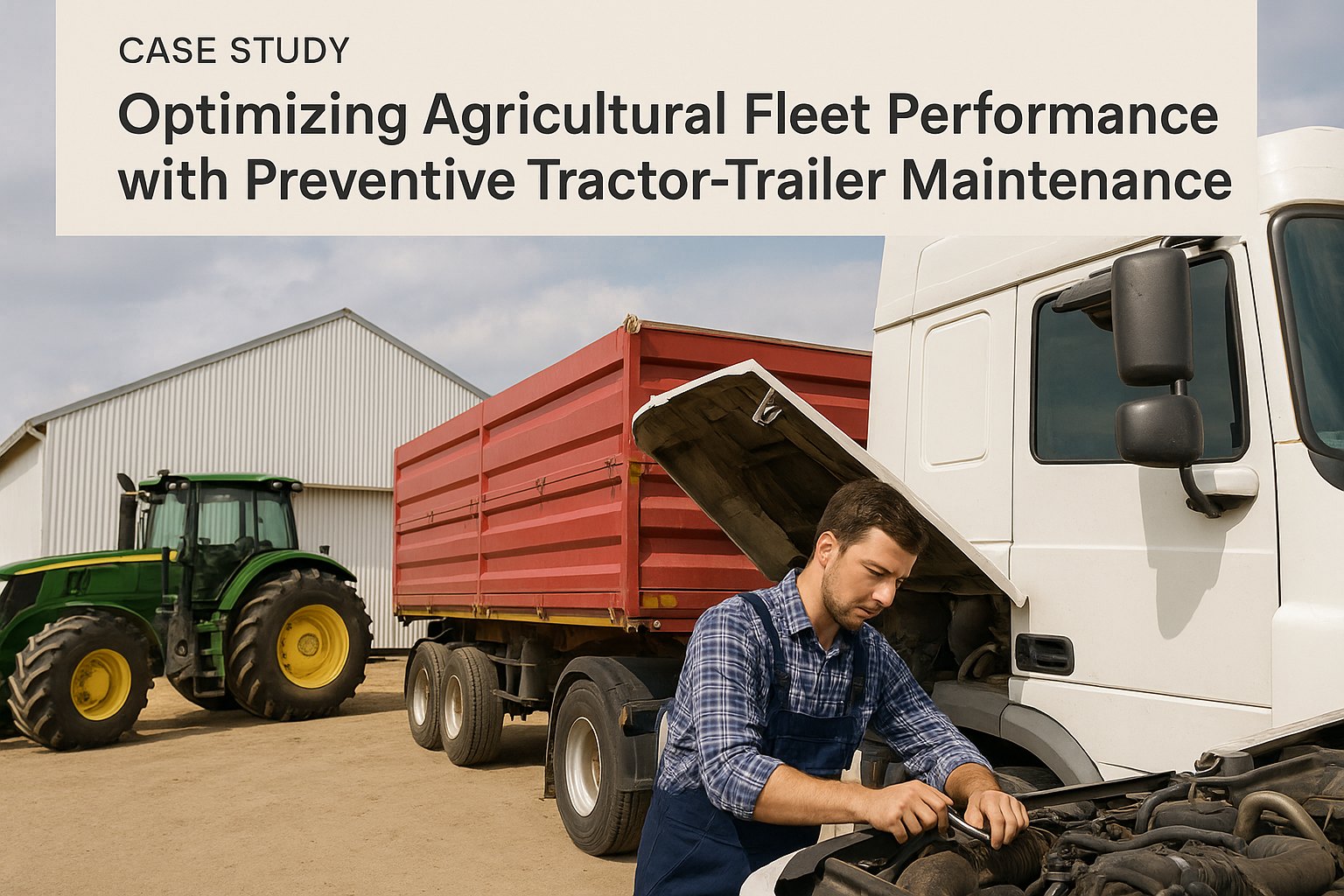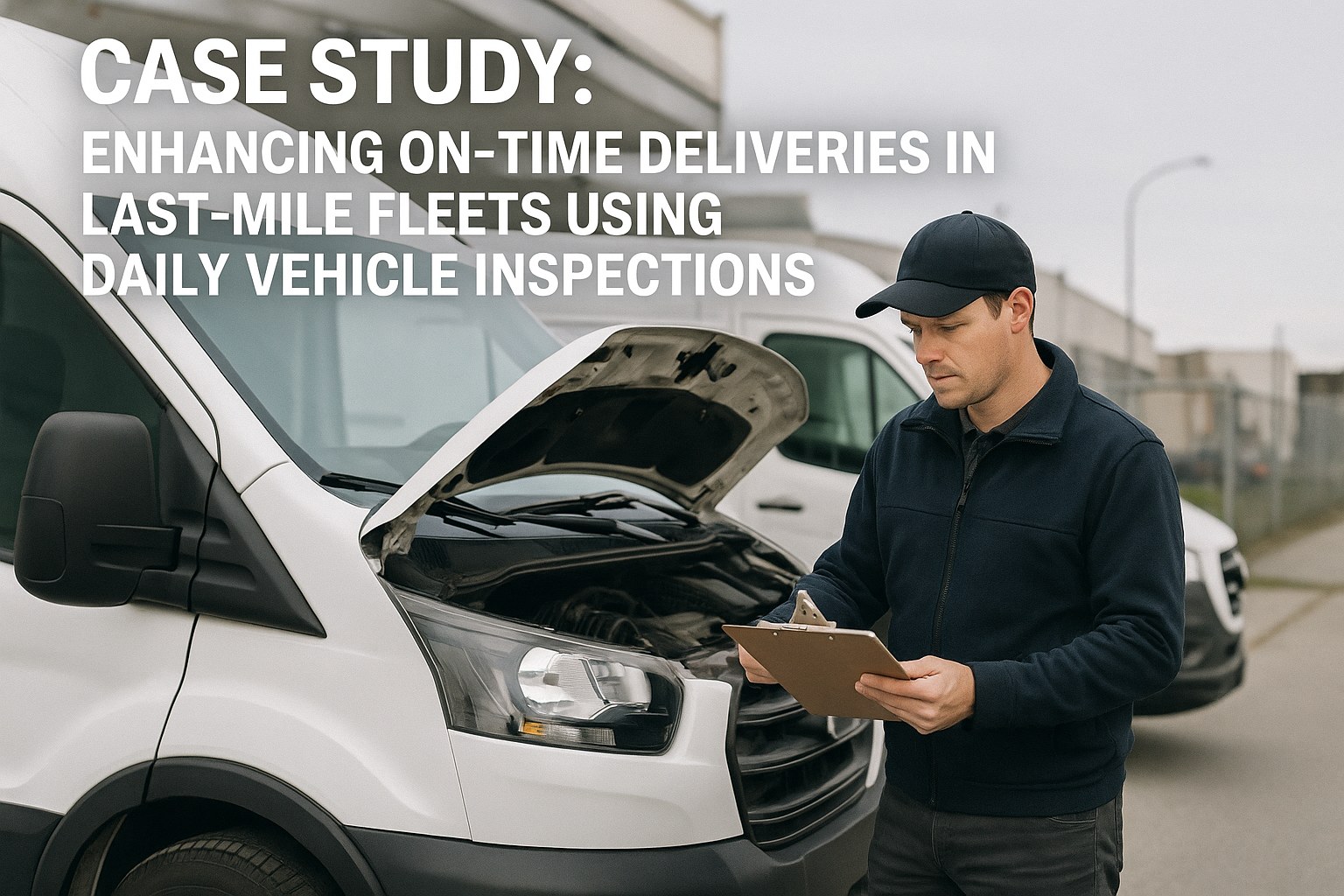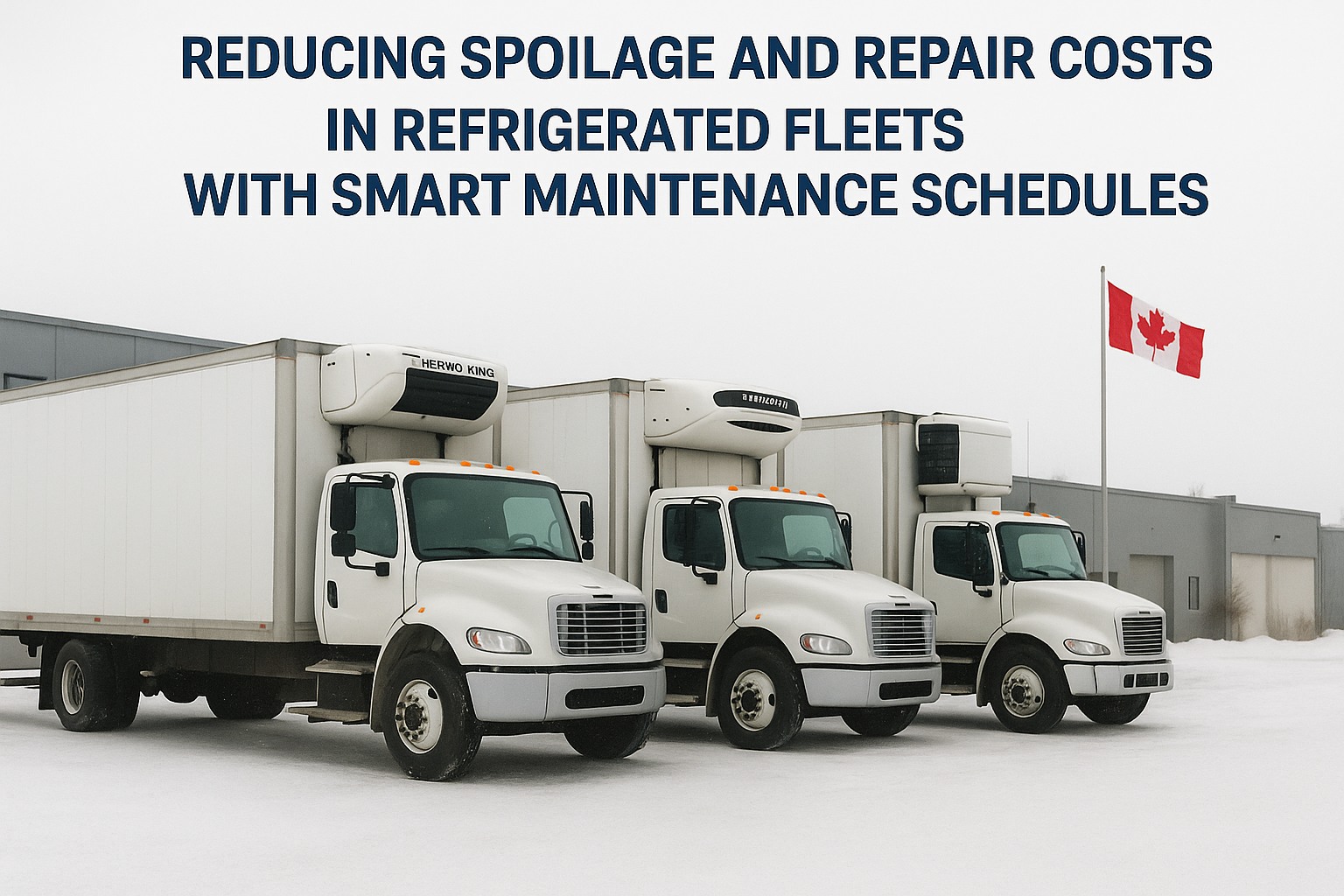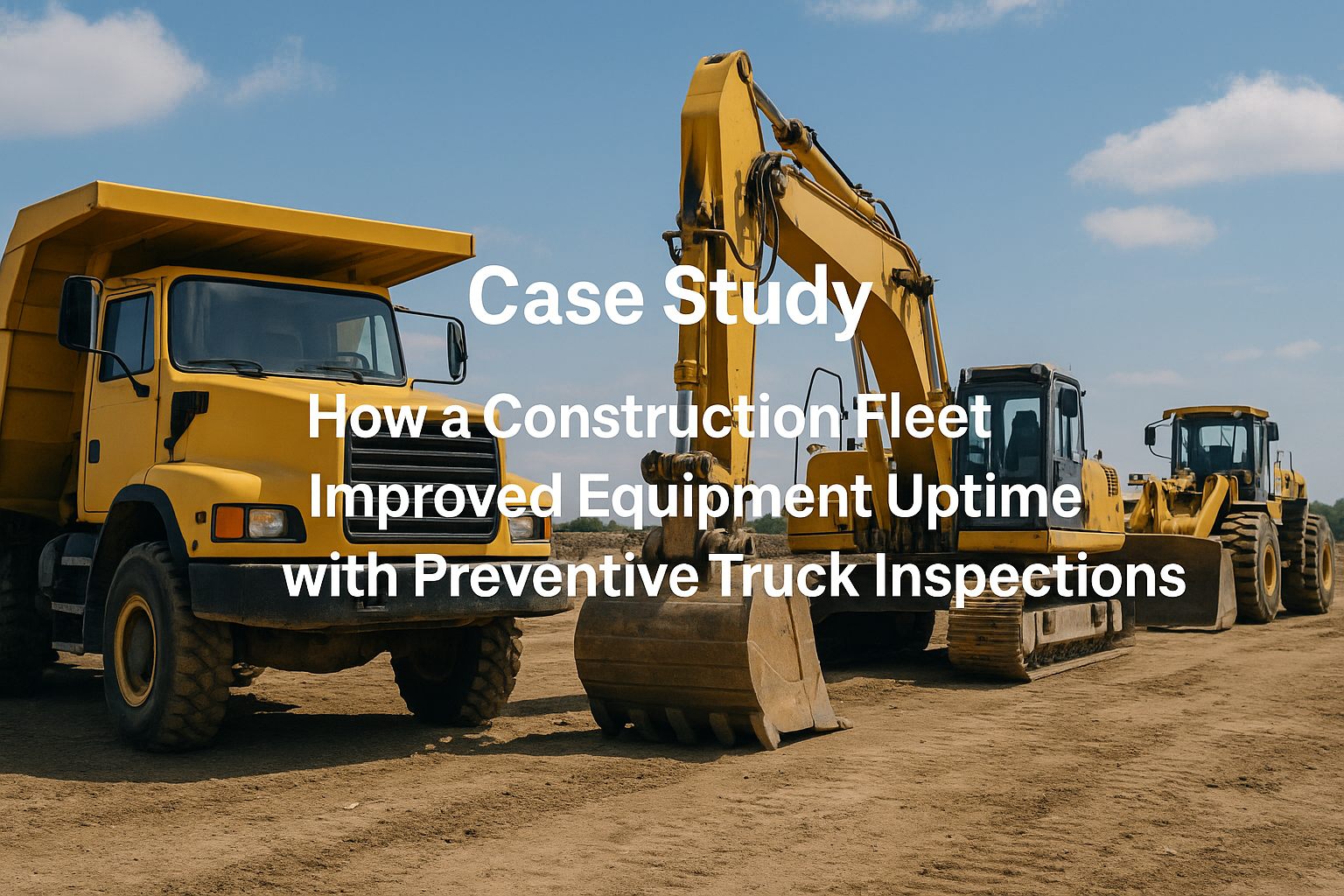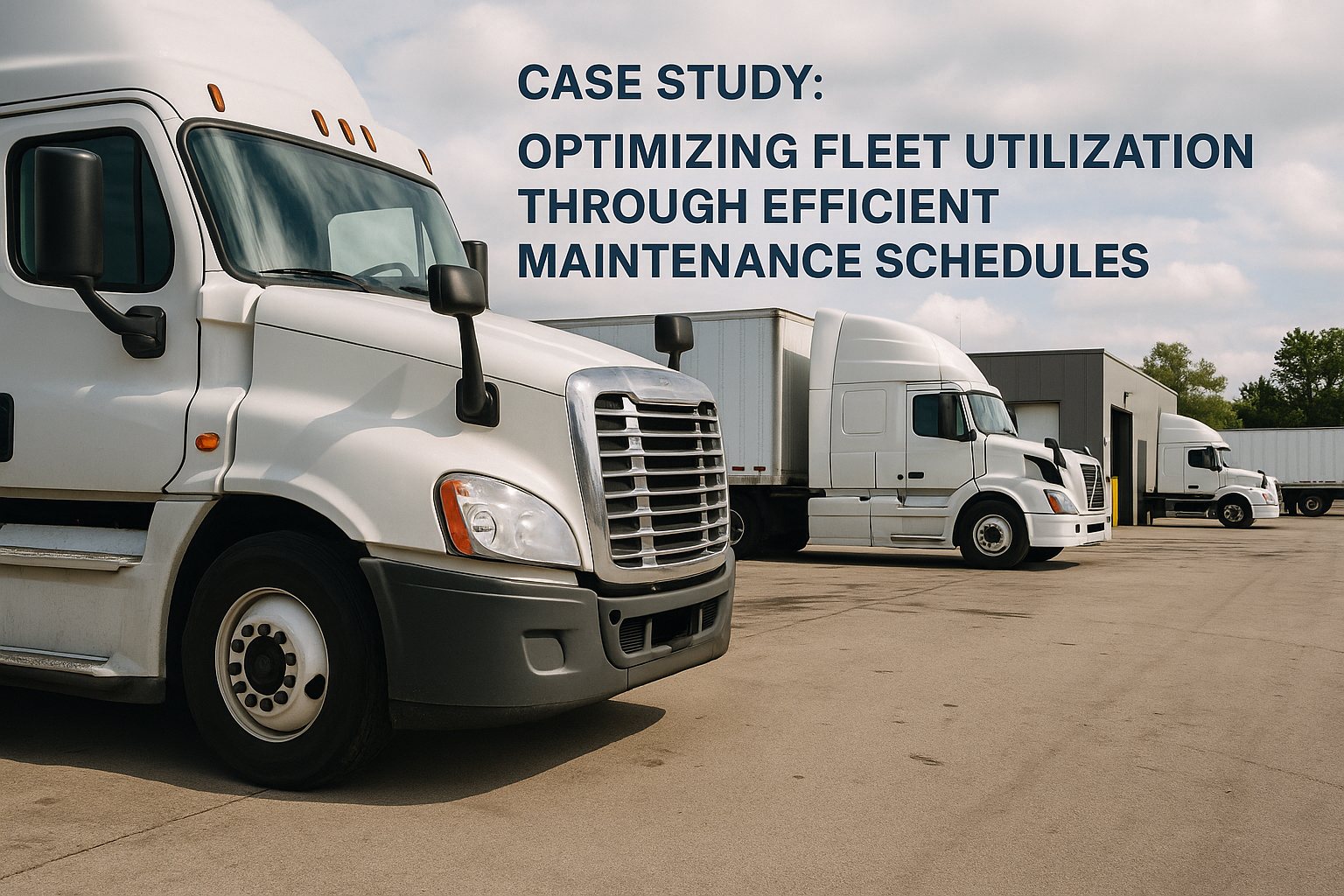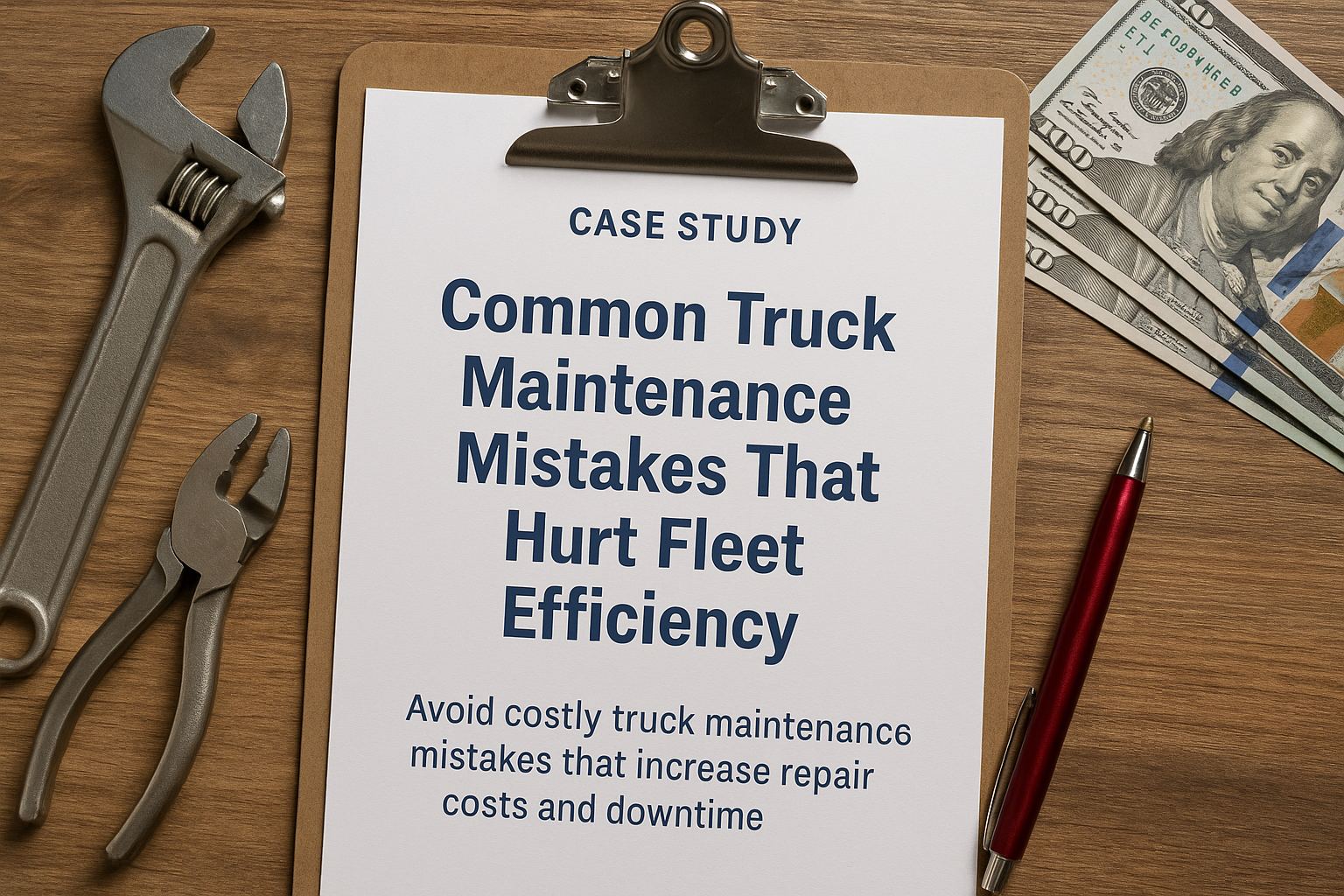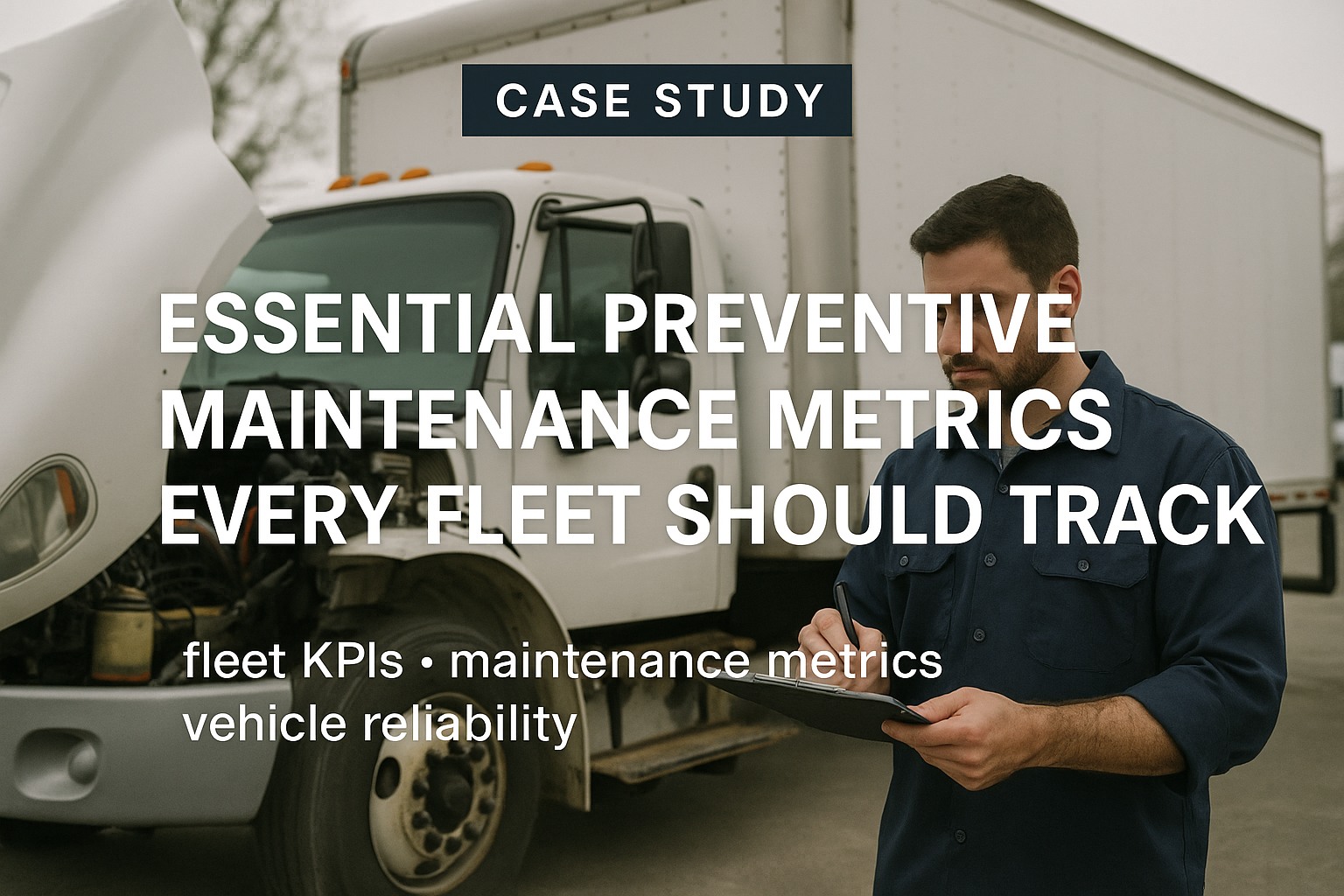In 2024, the National Heavy Vehicle Regulator (NHVR) reported that brake defects and overloading violations accounted for 47% of all heavy vehicle deficiency notices, with heavy haul trucks facing the highest scrutiny due to their critical role in Australia's mining and infrastructure sectors. For Australian heavy haulage operators managing B-doubles, road trains, and PBS vehicles, comprehensive axle load and brake inspections aren't just regulatory requirements—they're fundamental to operational sustainability, and chain of responsibility (CoR) compliance.
The intersection of mass management accreditation and heavy vehicle safety presents unique challenges for heavy haul fleet managers. Much like healthcare facilities managing critical equipment through sophisticated monitoring systems, modern heavy haulage operations require equally robust approaches to axle weight limits and brake system monitoring. The stakes are remarkably similar: both industries cannot afford failures, both face stringent regulatory oversight, and both benefit tremendously from predictive maintenance strategies that maximize safety while ensuring compliance.
Consider this: A single NHVR compliance breach can result in fines ranging from $6,000 to $50,000, but the hidden costs—including permit suspensions, increased insurance premiums, and damaged reputation—often exceed $200,000 per incident. Yet, companies implementing comprehensive axle load inspections and brake monitoring programs report 91% fewer violations while simultaneously reducing maintenance costs by 38%. This guide explores how three Australian heavy haul giants achieved these remarkable results.
Understanding NHVR Compliance: The Foundation of Heavy Haul Excellence
National Heavy Vehicle Regulator compliance encompasses a complex framework of regulations designed to ensure heavy vehicle safety across Australia's road network. For mining transport and heavy haulage professionals managing fleets, understanding these requirements is the first step toward building an inspection program that exceeds standards while optimizing operational efficiency.
Critical NHVR Compliance Areas for Heavy Haul:
- Axle load limits and mass management requirements under HVNL
- Brake system performance standards and testing protocols
- Performance Based Standards (PBS) vehicle compliance
- Oversize load permits and route compliance
- Chain of Responsibility obligations for all parties
- Fatigue management and work diary requirements
- Vehicle standards and roadworthiness certification
The parallels between heavy haul maintenance and critical infrastructure management are striking. Just as mining operations rely on sophisticated monitoring systems to ensure equipment reliability, heavy haul fleet managers must maintain their vehicles with equal precision. Both industries face safety-critical implications, regulatory scrutiny, and the imperative to maximize asset availability while controlling costs.
Case Study 1: Pilbara Heavy Transport's Safety Transformation
Pilbara Heavy Transport, operating 150 road trains and B-doubles across Western Australia's mining regions, faced a compliance crisis in 2023. With axle weight violations climbing and brake-related incidents threatening their mass management accreditation, they implemented a revolutionary inspection program that would become the industry benchmark.
The Challenge
Before transformation, Pilbara Heavy Transport struggled with reactive maintenance practices that resulted in frequent roadside inspections failures and safety incidents. Their challenges included:
- Average of 6.2 axle overloading violations per month across the fleet
- $1.2 million in NHVR fines and penalties over 24 months
- Insurance premiums increased by 78% following brake-related incidents
- Loss of key mining contracts due to safety performance concerns
- No integrated system for monitoring axle loads and brake performance
The Solution
Pilbara implemented a three-phase approach that integrated technology, training, and process optimization. Their solution borrowed best practices from aviation safety management, adapting predictive monitoring principles to heavy vehicle operations.
Phase 1: Technology Implementation
The company deployed an integrated fleet safety system combining on-board axle load monitoring, electronic brake testing equipment, and real-time compliance tracking. This platform integrated with their existing transport management system, creating comprehensive visibility of vehicle safety status.
Phase 2: Preventive Inspection Protocols
Pilbara developed comprehensive inspection schedules based on NHVR requirements, manufacturer specifications, and operational risk assessments. Every PBS vehicle and road train received scheduled inspections based on kilometres travelled, load cycles, and operating conditions.
Phase 3: Driver Safety Empowerment
Recognizing that drivers are critical to safety outcomes, the company invested heavily in CoR training programs. Drivers learned to conduct thorough pre-trip axle load checks and brake system assessments using mobile apps that automatically logged findings and triggered maintenance workflows when issues were identified.
Results and ROI
Within 12 months of implementation, Pilbara Heavy Transport achieved remarkable results that exceeded all projections:
- Safety Improvements: Zero brake-related incidents for 18 consecutive months
- Compliance Excellence: NHVR violation rate dropped from 28% to 1.1%
- Cost Reductions: Total maintenance costs decreased by 45% through preventive measures
- Operational Excellence: Vehicle availability improved from 82% to 96.5%
- Financial Impact: ROI of 312% within the first year
Case Study 2: Queensland Mining Logistics' Digital Revolution
Queensland Mining Logistics, operating 200 heavy vehicles including quad road trains and oversized load transporters, faced unique challenges meeting strict mining site entry requirements while maintaining HVNL compliance. Their story demonstrates how digital transformation can revolutionize heavy vehicle safety management.
The Innovation Approach
Queensland Mining took a data-driven approach to safety compliance, implementing IoT sensors and predictive analytics to monitor axle loads in real-time and predict brake system degradation before failures occurred. Their system monitored everything from individual wheel bearing temperatures to brake chamber pressure, creating a predictive safety ecosystem that prevented violations before they occurred.
Key innovations included automated mass distribution monitoring that ensured no axle exceeded legal limits, predictive brake component replacement based on usage patterns and heat cycling data, and mobile inspection teams performing calibrated brake tests at loading sites. Their integration with weighbridge systems enabled automatic load optimization, reducing overloading incidents by 94%.
Building Your Heavy Haul Safety Inspection Program
Creating a world-class safety inspection program requires more than technology—it demands a systematic approach that aligns people, processes, and tools. Based on insights from industry leaders, here's a comprehensive framework for building your program.
Step 1: Assessment and Planning
Begin with a thorough assessment of your current state. This mirrors the approach mining companies take when implementing safety management systems. Document your existing inspection practices, compliance history, and safety challenges.
Assessment Checklist:
- Analyze past 24 months of NHVR violations and identify patterns
- Calculate true cost of safety incidents including downtime and reputation
- Evaluate current inspection technology and testing equipment
- Assess team competencies against CoR requirements
- Review insurance claims and incident reports
- Benchmark against industry safety performance standards
Step 2: Technology Selection
Choose inspection and monitoring systems that provide comprehensive safety assurance capabilities. Essential features include real-time axle load monitoring with automatic alerts, electronic brake testing with performance trending, mobile inspection apps with offline capability, and compliance documentation management. The system should offer predictive analytics for component failure prevention and integrate with existing transport management systems.
Step 3: Process Development
Develop standardized processes that ensure consistency across your heavy haul operations. This includes creating detailed inspection checklists aligned with NHVR requirements, establishing testing intervals based on risk assessment rather than assumptions, and implementing escalation procedures for critical safety issues. Document everything—in the world of HVNL compliance, comprehensive records are your best defence.
Step 4: Training and Culture
The most sophisticated systems fail without proper adoption. Invest in comprehensive training that covers regulatory requirements, inspection procedures, and the business case for safety excellence. Create a culture where safety inspections are valued over operational shortcuts.
Advanced Strategies for Heavy Haul Safety Excellence
Leading fleets are pushing beyond basic compliance to achieve safety excellence. These advanced strategies separate industry leaders from those merely meeting minimum requirements.
Predictive Analytics and AI for Safety
Modern heavy haul operations leverage artificial intelligence to predict safety risks before they manifest. By analyzing patterns across thousands of load cycles, AI systems can identify subtle indicators that human inspectors might miss. This approach, similar to how advanced mining equipment monitoring prevents catastrophic failures, enables fleets to address safety issues at the optimal time—preventing incidents while maximizing vehicle availability.
Integrated Load Planning and Safety Systems
Forward-thinking companies are integrating load planning with safety monitoring systems. This innovation ensures every load is optimized for both efficiency and compliance, automatically calculating axle distributions and identifying potential overloading before vehicles leave the depot.
Real-Time Safety Performance Dashboards
The most sophisticated programs provide real-time visibility of safety metrics across the entire operation. This enables immediate intervention when safety parameters are exceeded, proactive communication with customers about compliance status, and data-driven decisions about vehicle deployment. The result is an operation where safety compliance enhances rather than hinders commercial objectives.
ROI Analysis: The Business Case for Safety Excellence
The financial benefits of comprehensive safety inspection programs extend far beyond avoided fines. A detailed analysis of programs across 75 Australian heavy haul fleets reveals compelling returns on investment.
Average Annual Benefits per 100 Heavy Vehicles:
- Avoided NHVR Fines and Penalties: $687,000
- Reduced Insurance Premiums: $456,000
- Decreased Incident Costs: $1,234,000
- Improved Vehicle Utilization: $345,000
- Retained Contracts (Safety Performance): $2,150,000
- Total Annual Benefit: $4,872,000
Against an average implementation cost of $850,000 and annual operating expenses of $220,000, the ROI exceeds 450% in the first year alone. These figures don't include intangible benefits like improved driver retention, enhanced customer confidence, and reduced legal liability under Chain of Responsibility.
Common Pitfalls and How to Avoid Them
Even well-intentioned safety programs can fail. Understanding common pitfalls helps ensure your inspection initiative delivers promised results.
Top 5 Implementation Failures:
- Underestimating Cultural Change: Technology alone won't transform safety. Invest equally in change management and continuous reinforcement.
- Incomplete Integration: Ensure all safety systems communicate seamlessly. Siloed data creates dangerous blind spots.
- Ignoring Fatigue Factors: Driver fatigue impacts inspection quality. Schedule inspections when drivers are alert and engaged.
- Focusing Only on Major Components: Small items like load restraints and marker lights cause many violations. Address everything.
- Inconsistent Calibration: Regular calibration of weighing and brake testing equipment is critical. Establish strict calibration schedules.
Future-Proofing Your Heavy Haul Safety Program
The regulatory landscape continues evolving, with new requirements for electronic work diaries, enhanced PBS standards, and advanced safety technology. Successful heavy haul operators build programs flexible enough to adapt to changing requirements while maintaining operational efficiency.
Emerging trends shaping the future of heavy vehicle safety include autonomous emergency braking becoming mandatory, electronic stability control for all heavy combinations, and advanced fatigue monitoring using biometric data. Real-time compliance scoring enables immediate corrective action, while augmented reality is revolutionizing driver training and remote safety assessments.
Your Roadmap to Heavy Haul Safety Excellence
Achieving NHVR compliance while optimizing safety outcomes isn't just possible—it's profitable. The case studies and strategies outlined in this guide provide a proven roadmap for transformation. Success requires commitment, investment, and a willingness to embrace safety as a core business value.
The parallels between heavy haul safety management and critical infrastructure monitoring offer valuable lessons. Both industries have discovered that proactive monitoring and preventive maintenance deliver superior outcomes compared to reactive approaches. By applying these proven principles to your heavy haul operations, you can achieve the same remarkable results: zero incidents, reduced costs, and enhanced operational efficiency.
The journey to safety excellence begins with a single step: assessing your current state and committing to continuous improvement. With the right strategy, technology, and team engagement, your fleet can join the ranks of industry leaders who've transformed heavy vehicle safety from a compliance burden into a competitive advantage.
Ready to Transform Your Heavy Haul Fleet Safety?
Join leading Australian heavy haulage companies revolutionizing their approach to axle load inspections and brake system monitoring. Discover how our comprehensive solutions can help you achieve similar results while maximizing safety and ensuring NHVR compliance.
Getting Started Book a Demo